 |
|
|||
|
|
||||
|
Sub category index
|
 |
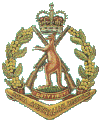
All badges are links |
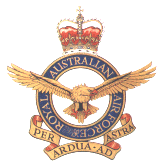 |
||
 |

|
||||
| ALL UNITS | |||||
|
|
|||||
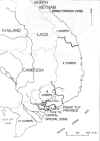 |
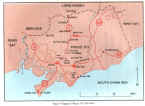
|
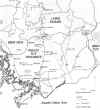 |
|||
| South Viet Nam | Villages and other landmarks, Phuoc Tuy | Phuoc Tuy Province | |||
 |
|||||
MPC, Funny
Money, Military Payment Certificates.
|
|||||
|
|
|||||
Following the defeat of the French Army at Dien Bien Phu in May 1954 in the First Indo-China War, Vietnam was partitioned at the 17th Parallel. The communist Democratic Republic of Vietnam (North Vietnam) (DRV) took control in the northern half of the country and the non-communist Republic of Vietnam (RVN) in the south. From the late 1950s, a civil war developed in South Vietnam between the communist supported National Liberation Front (NLF) with its military arm the Viet Cong (VC) and the US backed Government of Ngo Dinh Diem. The war intensified in 1963, following the assassination of Diem and his replacement by a series of unstable ‘revolving door’ governments. On 3 August 1962, following negotiations with the United States and at the request of the RVN, 30 Australian Army training advisers arrived in South Vietnam to join US Army advisers in what later became Military Assistance Command Vietnam (MACV). Their tasks primarily were to assist in training RVN ground forces in jungle warfare, village defence and related activities. The Australian Army Training Team Vietnam (AATTV) strength peaked at 202 in December 1970. Due to a deteriorating military situation in South Vietnam in late 1964 and early 1965, the United States proposed the introduction of sizeable ground forces. Following RVN agreement, in May 1965, 1RAR was deployed to Bien Hoa, north-east of Saigon. It joined the US 173 Airborne Brigade as the third battalion of the Brigade. Australian and New Zealand artillery batteries, as well as other supporting arms and services units, later joined. In addition to its responsibilities for the security of the Bien Hoa air base, 173 Airborne Brigade conducted a significant range of operations against VC forces throughout III Corps Tactical Zone (IIICTZ). The tactical zone included the RVN capital city, Saigon, lying between the IICTZ of the Central Highlands and the IVCTZ incorporating the Mekong Delta. In May 1966, a major increase in the size of the Army's combat element occurred following the relief of 1RAR, after one year's service, by 1 Australian Task Force (1ATF). This force was a brigade sized formation comprising a headquarters, two infantry battalions (5RAR, 6RAR) and elements from all supporting arms and services. It was based at Nui Dat in Phuoc Tuy Province located on the coast, east of Saigon, within IIICTZ. 1ATF was given tactical responsibility for the security of the province, excluding the populated areas, working in close coordination with RVN forces. 1 Australian Logistic Support Group (1ALSG), located at Vung Tau, a coastal town and port immediately south of Phuoc Tuy, provided logistic support for 1ATF. While both 1ATF and 1ALSG (as well as AATTV, RAN and RAAF units) were under national command of Headquarters Australian Force Vietnam (HQAFV) located in Saigon, 1ATF was under operational control of the equivalent of a US Army corps headquarters - Headquarters II Field Force Vietnam (HQIIFFV) - located at Long Binh, east of Saigon. No 9 Squadron RAAF, equipped with Iroquois (UH-1) helicopters, and based at Vung Tau, supported 1ATF operations, as did, to a much lesser degree, Caribou equipped No 35 Squadron RAAF. Infantry battalions, artillery batteries and SAS squadrons were relieved on a yearly basis, with the remainder of the force being on individual replacement. Additional battalions were raised to give the RAR a strength of nine battalions, while additional supporting arms and services units were raised. At its peak strength in 1969, the Australian Army in Vietnam totalled more than 7,000 personnel. Over the ten years of the war, more than 50,000 Army, Air Force and Navy personnel served in Vietnam. Initially 1ATF met little serious opposition, but on 18 August 1966, D Coy 6RAR, on a fighting patrol to clear suspected recoilless rifle and mortar sites, encountered a large enemy force in the Long Tan rubber plantation east of Nui Dat. In a number of attempts to over-run D Company, a large force of VC and North Vietnamese suffered heavy casualties from artillery fire, the small arms fire of the company and the machine guns of the armoured relief force. The United States Presidential Unit Citation was awarded to D Coy 6RAR for this action. Over the next 18 months, 1ATF extended its control over Phuoc Tuy Province with a range of task force and battalion operations. Some were undertaken in cooperation with US and RVN forces, and covered a full range of mission types from jungle patrolling to cordon and search operations of various towns and villages. A civil affairs unit was added to 1ATF in March 1967 to carry out and coordinate a vast range of construction, resettlement, medical and dental, education and welfare activities for the civil population of Phuoc Tuy. New Zealand Army infantry companies from RNZIR were integrated into an RAR battalion, resulting in the RAR battalion being designated 'ANZAC'. In December 1967, 1ATF was augmented by a third RAR battalion and a squadron of Centurion tanks. Three major operations to secure the major bases of Long Binh, Bien Hoa and the capital Saigon from VC and NVA offensives involved 1ATF operating as a formation (less one battalion and other elements securing its base) outside Phuoc Tuy Province. These were Operation Coburg in January/February 1968, Thoan Thang I in May 1968 and Federal in February 1969. The first two operations involved significant clashes with large enemy forces. May 1968 also saw large scale enemy attacks on Australian positions in the battle of Fire Bases Coral and Balmoral and at the village of Binh Ba. In 1969, growing disenchantment with the war, as well as US attempts to reduce casualties and prepare for disengagement, led to the emphasis in operations changing to 'pacification' - the enhancement of the security of the populated areas of the RVN, combined with the upgrading of the effectiveness of RVN forces. Notwithstanding this commitment, 1ATF offensive operations in Phuoc Tuy ensured that by 1971 there were few incursions by VC and NVA major units. Commencing in 1968, public opinion in both Australia and the United States began to turn against the war. Exacerbated by the propaganda disaster of the communists’ 1968 'Tet' Offensive, the combination of the unpopularity of conscription and the rising casualty rates, public opposition in both the US and Australia forced the political leaderships to announce the withdrawal of allied forces. In November 1970, 8RAR was withdrawn and not replaced. 1ATF withdrew from Phuoc Tuy in November 1971, followed shortly after by 1ALSG. AATTV, having been gradually reduced in strength, concentrated in Phuoc Tuy Province with the departure of 1ATF, and continued training ARVN forces until the withdrawal of the last Australian elements in December 1972. For the Australian Army, the withdrawal from Vietnam represented the end of 33 years of continuous operational duties, which had commenced with World War II, continued through the occupation of Japan, the Korean War, the Malayan Emergency and Indonesian Confrontation to the Second Indo-China War in Vietnam.
|


